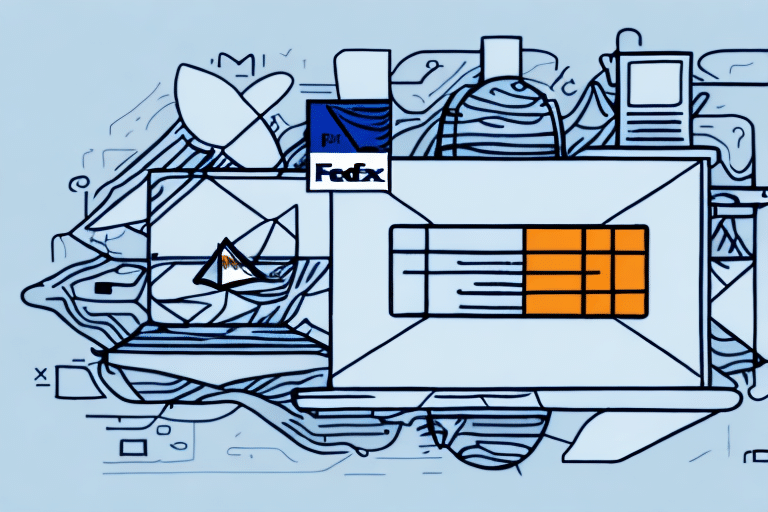Understanding UPS Shipping Rates for a 50 lb Package from 80481 to 33952
Shipping a 50 lb package with UPS from zip code 80481 to 33952 involves understanding various factors that influence the cost and efficiency of your shipment. Whether you're an individual sending a personal package or a business managing regular shipments, knowing how UPS calculates rates can help you optimize your shipping strategy.
Factors That Affect UPS Shipping Rates
Several elements determine the cost of shipping a package with UPS. Understanding these factors can help you make informed decisions and potentially reduce your shipping expenses. The main factors include:
- Package Weight: Heavier packages generally incur higher shipping fees.
- Package Dimensions: Oversized or bulky packages may cost more, even if their weight is within standard limits.
- Distance: The distance between the origin and destination zip codes affects the shipping rate.
- Shipping Speed: Faster shipping options, such as overnight or two-day delivery, are more expensive than standard ground shipping.
- Shipping Service Type: Different UPS services (e.g., UPS Ground, UPS 2nd Day Air) have varying costs.
- Insurance and Additional Services: Adding insurance, signature confirmation, or other services can increase the overall cost.
- Destination Country: For international shipments, customs fees, import taxes, and duties play a significant role in the total cost.
According to the UPS Service Guide, UPS considers both the weight and dimensions of a package, charging based on whichever is greater to account for bulky but light packages.
How to Calculate UPS Shipping Rates for a 50 lb Package from 80481 to 33952
Calculating UPS shipping rates involves considering several variables. Here are the steps to estimate the cost for shipping a 50 lb package from 80481 to 33952:
- Visit the UPS Rate and Service Guide or use the UPS Shipping Calculator.
- Enter the package weight (50 lbs) and dimensions.
- Select the origin and destination zip codes (80481 to 33952).
- Choose the desired shipping speed and service type.
- Add any additional services like insurance or signature confirmation.
As of 2023, the estimated cost for ground shipping a 50 lb package over this distance is approximately $85.00, though actual rates may vary based on the factors mentioned earlier.
For the most accurate pricing, utilize the UPS Shipping Calculator, which provides real-time estimates based on current rates and services.
Understanding the Different Types of UPS Shipping Services Available
UPS offers a variety of shipping services tailored to different needs. Here are some of the most popular options:
- UPS Ground: Reliable and cost-effective ground shipping for packages that don't require expedited delivery.
- UPS Next Day Air: Fastest service for next-business-day delivery.
- UPS 2nd Day Air: Delivers by the end of the second business day.
- UPS 3 Day Select: Delivery within three business days.
- UPS Worldwide Express: Expedited international shipping with delivery in 1-3 business days.
- UPS Worldwide Saver: Faster international shipping option with delivery typically by the end of the next business day.
- UPS Worldwide Expedited: Cost-effective international shipping with delivery in 2-5 business days.
Choosing the right service depends on your specific needs regarding speed, cost, and package size. For instance, UPS Next Day Air is ideal for urgent deliveries, while UPS Ground is suitable for non-urgent shipments.
For more details on each service, visit the UPS Worldwide Express page.
Tips for Reducing Your UPS Shipping Costs
Shipping can become a significant expense, especially for businesses. Implementing the following strategies can help minimize your UPS shipping costs:
- Choose the Right Shipping Service: Select a service that balances speed and cost based on your delivery needs.
- Use a UPS Account: Regular shippers can benefit from discounted rates by setting up a UPS account.
- Optimize Packaging: Use appropriately sized boxes to avoid dimensional surcharges and reduce package weight.
- Consolidate Shipments: Combine multiple packages into a single shipment to take advantage of bulk shipping discounts.
- Schedule Shipments in Advance: Planning ahead can help you avoid rush fees and take advantage of lower rates.
- Utilize UPS Online Tools: Tools like the UPS Shipping Calculator and UPS My Choice can help you find the most cost-effective shipping options.
Additionally, enrolling in UPS My Business Solutions can provide access to exclusive discounts and services tailored to business needs.
Comparing UPS Shipping Rates with Other Carriers
When selecting a shipping carrier, it's essential to compare UPS rates with those of other major carriers like FedEx and USPS to ensure you're getting the best value. Consider the following factors during your comparison:
- Cost: Compare base shipping rates and any additional fees.
- Delivery Speed: Assess whether the carrier meets your required delivery timelines.
- Service Reliability: Look into each carrier's track record for on-time deliveries and package handling.
- Coverage: Ensure the carrier serves all the destinations you need, especially for international shipments.
- Customer Support: Evaluate the quality of customer service and support options available.
For example, FedEx often excels in overnight shipping options, while USPS might offer more economical rates for smaller packages. Conducting a rate comparison using tools like the UPS Shipping Calculator can help you determine the most cost-effective carrier for your specific needs.
Differences Between Domestic and International UPS Shipping Rates
Shipping domestically versus internationally with UPS involves different considerations and pricing structures:
- Domestic Shipping: Typically less expensive and faster, with predictable delivery times. Rates are primarily influenced by package weight, dimensions, and distance within the country.
- International Shipping: Generally more costly due to longer distances, customs clearance, and potential import taxes and duties. Additional factors include destination country restrictions and the need for accurate customs documentation.
According to the UPS International Shipping Guide, international rates can also be affected by geopolitical factors and changes in international trade agreements.
To manage international shipping costs effectively:
- Accurately declare the value and contents of your shipment to avoid unexpected customs fees.
- Utilize UPS's International Shipping Calculator to estimate costs beforehand.
- Consider using services like UPS Worldwide Saver for faster and potentially more cost-effective international deliveries.
How to Track Your UPS Shipment and Manage Delivery Expectations
Tracking your UPS shipment is crucial for both senders and recipients to stay informed about the package's status. Here's how you can manage and track your shipment effectively:
- Use the UPS Tracking System: Enter your tracking number on the UPS Tracking page to view real-time updates on your package's location and estimated delivery date.
- Set Up Notifications: Sign up for UPS My Choice to receive email or SMS notifications about your package's progress.
- Provide Accurate Contact Information: Ensure that both sender and recipient have correct contact details to receive timely updates and notifications.
- Plan for Delivery: Make sure someone is available to receive the package, or utilize UPS's Delivery Manager to adjust delivery preferences, such as rerouting to a different address or holding at a UPS location.
Managing expectations through effective tracking can help avoid missed deliveries and ensure that packages arrive safely and on time.
Common Mistakes to Avoid When Using UPS Shipping Services
To ensure a smooth shipping experience with UPS, avoid the following common mistakes:
- Improper Packaging: Inadequately packaged items can lead to damage during transit. Use sturdy boxes and sufficient padding to protect your contents.
- Incorrect Weight and Dimensions: Accurately measuring and weighing your package prevents unexpected surcharges and delays.
- Incomplete or Inaccurate Labels: Ensure that all labels are clear, complete, and correctly address the recipient to avoid delivery issues.
- Ignoring UPS Guidelines: Familiarize yourself with UPS packaging and shipping guidelines to comply with their standards and avoid additional fees.
- Failure to Insure Valuable Items: For high-value shipments, consider adding insurance to protect against loss or damage.
By steering clear of these mistakes, you can enhance the reliability and efficiency of your UPS shipments.
How to Prepare Your Package for Safe and Secure Shipment
Proper package preparation is essential to ensure that your items arrive intact and on time. Follow these best practices:
- Select Appropriate Packaging Materials: Use high-quality, sturdy boxes and avoid using damaged or weak packaging.
- Use Adequate Padding: Protect your items with padding materials like bubble wrap, packing peanuts, or foam inserts to prevent movement and damage.
- Seal Packages Securely: Use strong, durable tape to seal all openings and reinforce corners to secure the package.
- Label Clearly and Accurately: Include both sender and recipient addresses clearly on the package. Use printed labels for better readability.
- Include Necessary Documentation: For international shipments, ensure that all required customs forms and documentation are completed accurately.
Adhering to these packaging guidelines can significantly reduce the risk of damage and delays during the shipping process.
Understanding Additional Fees and Surcharges That May Apply
UPS may apply additional fees and surcharges based on specific circumstances related to your shipment. Being aware of these can help you avoid unexpected costs:
- Oversized Package Surcharges: Extra fees for packages exceeding standard size limits.
- Overweight Package Surcharges: Additional charges for packages that surpass weight limits.
- Residential Delivery Fees: Higher rates for delivering to residential addresses compared to commercial locations.
- Delivery Area Surcharges: Extra costs for deliveries to remote or hard-to-reach areas.
- Fuel Surcharges: Variable fees based on fluctuating fuel prices.
Review the UPS Fee Schedule to understand which surcharges may apply to your specific shipment and incorporate these into your shipping budget planning.
Best Practices for Managing Your Business's UPS Shipping Needs
For businesses that rely on UPS for regular shipments, implementing best practices can enhance efficiency and reduce costs:
- Establish a UPS Account: Access discounted rates and streamlined billing by setting up a UPS business account.
- Leverage UPS Online Tools: Utilize UPS's online platforms for managing shipments, printing labels, and tracking packages.
- Consolidate Shipments: Combine multiple orders into a single shipment to benefit from bulk shipping discounts.
- Train Employees: Educate your team on proper packaging, labeling, and shipping procedures to minimize errors and inefficiencies.
- Monitor Shipping Metrics: Track key performance indicators such as delivery times, costs, and customer satisfaction to identify areas for improvement.
- Negotiate Rates: As your shipping volume increases, work with UPS to negotiate more favorable rates based on your business needs.
Implementing these strategies can lead to significant cost savings and a more streamlined shipping process for your business.
Conclusion
Shipping a 50 lb package with UPS from 80481 to 33952 can be both cost-effective and reliable when you understand the factors influencing shipping rates and utilize the available tools and services effectively. By considering package weight and dimensions, choosing the appropriate shipping service, optimizing packaging, and leveraging UPS's business solutions, you can ensure that your shipments arrive safely and on time while maintaining control over your shipping expenses.
For more detailed information and to access UPS shipping tools, visit the ShipScience UPS Shipping Resources.




















